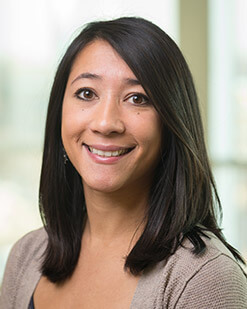Diverticulosis & Diverticulitis
This information was reviewed and approved by Jeffrey B. King, MD (2/1/2024).
About Diverticulosis
The colon, or large intestine, is the lower portion of the gastrointestinal (GI) tract and is about 5 feet long. Diverticulosis is a disease that occurs in the colon. Diverticula are small pockets that form in the wall of the colon. Colonic diverticulosis means the presence of diverticula in the colon.
Causes of Diverticulosis
Diverticulosis is a condition that is fairly common as a person ages. Diverticulosis tends to occur more often in developed countries because of the diet low in dietary fiber. Another reason diverticulosis may occur more often in developed countries is the lack of physical activity.
Symptoms of Diverticulosis
Most people have no symptoms with diverticulosis. Since often no symptoms are present, diverticulosis is often diagnosed when another test such as a colonoscopy, sigmoidoscopy, CT scan or barium enema is done.
Complications of diverticulosis include diverticulitis and diverticular bleeding.
Diverticulosis Diagnosis
As stated earlier, diverticulosis is often diagnosed when another test is done, since often no symptoms are present, whereas diverticulitis is often diagnosed when acute symptoms are present. The first step in finding the diagnosis and the best treatment is a detailed history and physical exam. Based on this information, your doctor may order a number of tests. These may include:
CT scan (most common): During a CT scan, pictures are taken of cross sections or slices of the abdominal structures in your body. This includes the colon or large intestine.
Barium enema: The barium used in a barium enema will help show the large intestine on the x-ray.
Colonoscopy: Your health care provider may do a colonoscopy to visualize the inside of your entire colon, not just the lower portion.
Sigmoidoscopy: Your health care provider may do a sigmoidoscopy to visualize the inside of your colon. A small flexible tube is used to see inside the rectum and lower portion of the colon. If the test is positive, your health care provider may recommend a colonoscopy.
Treatment for Diverticulosis
The main treatment for diverticulosis is a healthy diet, high in dietary fiber. A diet high in dietary fiber includes plenty of fruits, vegetables and whole grains. Avoidance of whole seeds is unproven and not recommended at this point.
About Diverticulitis
Diverticulitis is also a disease that occurs in the colon. Diverticula are small pockets that form in the wall of the colon. The small pockets, or diverticula, in the colon can become inflamed and infected at times. This is called diverticulitis.
Symptoms of Diverticulitis
Pain in the lower left or occasionally the right portion of the abdomen is the most common symptom of diverticulitis. This pain may get worse over several days and may vary in severity. In addition, nausea, vomiting, diarrhea and constipation are symptoms that may occur. In moderate to severe symptoms a person has more severe pain, can't keep any liquids down and may have a fever.
Treatment for Diverticulitis
The treatment of diverticulitis depends on the severity of the symptoms.
Treatment of mild symptoms often occurs at home. Treatment includes drinking clear liquids and the use of oral antibiotics. Symptoms should improve in 2-3 days, and the diet can be slowly advanced. Communication with your health care provider is important if symptoms worsen or do not improve.
Treatment of moderate to severe symptoms of diverticulitis occurs in the hospital. Moderate to severe symptoms may include a temperature, worsening abdominal pain and vomiting. This treatment includes IV (intravenous) fluids, IV antibiotics and clear liquids or nothing by mouth to rest the GI tract.
If a perforation, obstruction, abscess or fistula (abnormal opening in the intestine) is present, further treatment is often needed. Recurrent episodes or a severe episode of diverticulitis may also require surgery to remove the diseased portion of the colon. If the surgery is done on an emergency basis, two surgeries may be required.
Monitoring Diverticulitis
Once a person is diagnosed with diverticulitis, an evaluation of the entire colon with a colonoscopy is often recommended. This can identify the extent of disease and identify other issues, such as colon polyps. Further follow-up with a GI (gastrointestinal) doctor is also recommended.
Diverticular Bleeding
The arteries supplying blood to the damaged part of the colon may weaken and rupture. This is diverticular bleeding.
Symptoms of Diverticulitis
Treatment for Diverticulitis
Treatment for diverticular bleeding will include urgent hospitalization and resuscitation, which will include IV placement, IV fluids and possible blood transfusion. If bleeding persists, identification and treatment of the bleeding site will be needed. The patient will likely need emergency evaluation with a possible colonoscopy and endoscopic treatment. It is also possible that angiography with angiographic therapy or surgical intervention may be required.
Our Specialists
-

Arash Babaei, MD
-

Danielle Keogh, FNP-BC
-

Jeffrey B. King, MD
-

Pranav Periyalwar, MD, FACG, FASGE
-
.jpg?width=247&height=309&ext=.jpg)
Serena Snow, FNP-BC
-

Neil W. Toribara, MD, PhD
-

Vivian M. Ussui, MD, MSc
 Programs and Services
Programs and Services
Thousands of patients come to us from around the world to team with our expert physicians and researchers and seek treatment for respiratory, cardiac, immune and related conditions. Search our treatment programs.
 Clinical Trials
Clinical Trials
For more than 100 years, National Jewish Health has been committed to finding new treatments and cures for diseases. Search our clinical trials.
